
10 minute read
Industry News
Johnson Controls is one of the first heat pump manufacturers to join the Cold Climate Heat Pump Challenge. Photo
provided by Johnson Controls
Cold Climate Heat Pump Challenge comes to Canada
By Leah Den Hartogh
The Department of Energy (DOE), in partnership with Natural Resources Canada (NRCan) and heat pump manufacturers, have launched the Residential Cold Climate Heat Pump Technology Challenge, announced back in May.
“This challenge will increase the availability of high performance, energy efficient heat pumps for Canadian cold climate temperatures, while also innovating to design units that are more efficient across a broader range of operating conditions, ultimately benefiting Canadian homes and businesses, ” states NRCan. “Given Canada ’ s varying climate landscape, it is important to continue to encourage innovation and provide leadership to define cold weather space heating needs so that the next generation of cold climate heat pumps, built by global manufacturers, can better address cold weather applications in the future.”
Manufacturers involved in the challenge include Carrier, Daikin, Johnson Controls, Lennox, Mitsubishi Electric, and Trane.
“We are eager to take our offerings to the next level to further reduce reliance on inefficient backup heating sources, while also leveraging digital solutions to optimize building operations, driving building decarbonization deeper, faster and closer to net zero,” explains Katie McGinty, vice president and chief sustainability, government, and regulatory affairs officer with Johnson Controls.
It is still too early at this stage of the challenge to confirm whether or not the findings will be included in future iterations of the National Building Code of Canada or the National Energy Codes of Canada for Buildings, reports NRCan. However, “Canada is committed to improving energy efficiency in buildings and achieving net-zero by 2050.”
The Cold Climate Heat Pump (CCHP) Technology Challenge begins with a product prototype stage which will begin in late 2021 to early 2022. Next begins the lab testing stage in 2022, followed by field testing in the winter of 2022 to 2023, or 2023 to 2024, with the final deployment programs/commercialization stage completed in 2024.
The end goal will be to demonstrate the CCHP performance in lab and pilot sites and launch future pilot programs. “There are many myths about heat pumps that typically stem from experiences with split systems prior to cold climate systems,” explains Steve Cornelius, business development representative with Mitsubishi Electric Sales Canada. Typically, these myths follow the idea that heat pumps cannot provide enough heat in colder Canadian temperatures. “Seeing that systems are able to provide heat past -25C, if sized correctly, this will suffice most homeowners.” Additionally, Cornelius reports that the next generation of Mitsubishi cold climate products will have 100 per cent capacity available at -20C.
Working together
Space heating is considered a contributor to greenhouse gas (GHG) emissions from Canada’s homes and buildings, explains NRCan. “Working together with our U.S.
Continued on page “8”
Continued from page “7”
neighbour on a topic in support of moving towards net zero by 2050 is good for the climate, good for Canadians heating their homes and businesses, and for the market. Canada and the U.S. have an integrated market for many products, and the design of the next generation of energy efficient heat pumps is a shared interest of both of our countries,” explains NRCan.
The challenge focuses on residential, centrally ducted, electric-only heat pumps, and is broken into two segments: one for CCHP optimized for -15C operation and for CCHP optimized for -26C.
Manufacturers will be able to choose to participate in one or both segments of the challenge. Challenge submissions are limited to models that have a nominal cooling capacity (or nominal heating capacity for a heatingonly heat pump) greater than or equal to 24,000 btu/h and less than or equal to 65,000 btu/h, meet all the challenge specification requirements, and comply with all applicable federal and state standards and regulations.
Performance requirements for the challenge are based on seasonal heating, auxiliary heat, low global warming potential requirements, and connected product criteria.
“The largest barrier to the adoption of residential air source heat pumps in colder climates is the challenge of efficiently meeting a building’s heating load during harsh winter months. When outdoor temperatures are too cold for a heat pump to operate efficiently, backup heating is required, which is often served by electric resistance,” explains McGinty.
The DOE will collaborate with heat pump manufacturers to develop a test procedure to verify CCHP performance through lab testing. They will also provide technical and administrative support throughout the field testing and will coordinate progress between manufacturers, utilities, state agencies, and other stakeholders. To participate in the challenge, contact the DOE at E3Initiative@ ee.doe.gov.
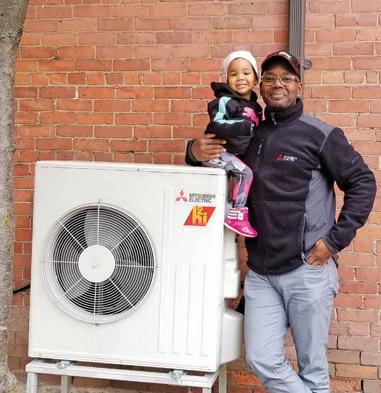
The H2i cold climate heat pump, by Mitsubishi Electric, can provide heating down to temperatures of -25C and connects with five different indoor units.
Your partner in new construction since 1992
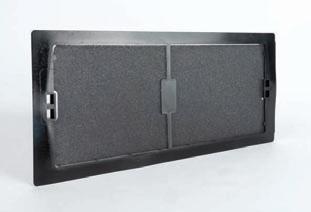

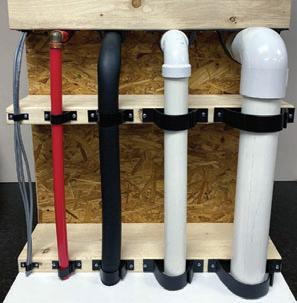
RETURN AIR FRAMES THERMOPAN SNAP CLAMPS
Plastic alternative to sheet metal return air frames Filtered and windowed models keep system clean during rough-in Tested and trusted since 1992
Our Mechanical Contractor Hub was built for you thermopan.ca

Thehighestsellingbrandof The highest selling brand of condensing combi-boilers takes home heating and DHW to new heights
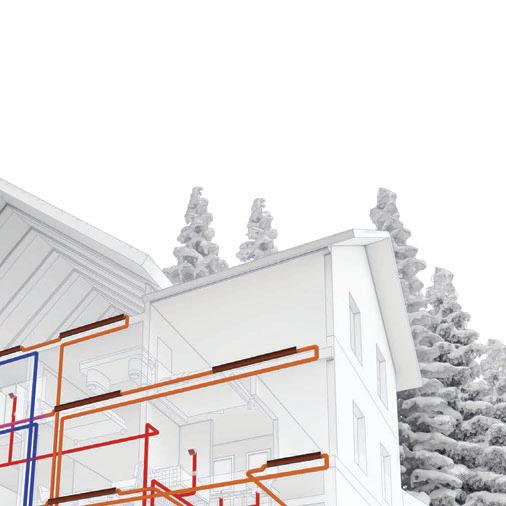
HEATING UP TO 150,000 BTU/H DHW UP TO 210,000 BTU/H Introducing Navien NCB-H


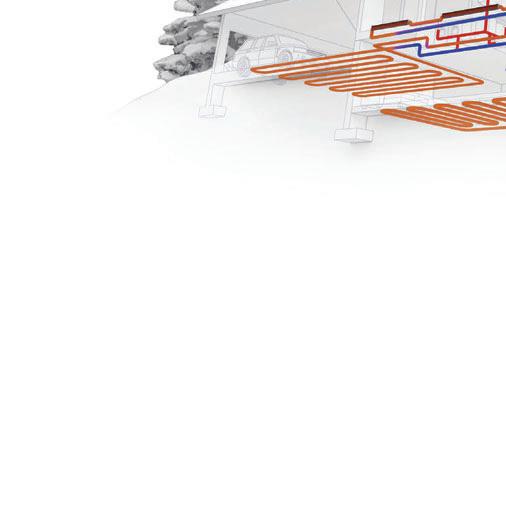
High capacity, High performance combi-boilers
Navien NCB-H high efficiency combis bring the highest level of whole house comfort to any size home...big or small
• Highest DHW maximum BTUs in residential condensing combi-boilers... up to 210,000 per hour • Highest DHW flow rate @ 70°F rise... up to 5.4 gallons per minute • Highest number of BTU sizes for the
North American residential combi-boilers • Highest residential combi-boilers domestic hot water turndown ratio...15:1 • Highest residential combi-boilers heating turndown ratio... up to 11:1 • Highest number of built-in zone controls for valves or pumps... up to three • Highest full lineup 2" venting lengths... up to 65 feet • Highest number of cascade capable units with up to 15 NPE tankless water heaters
• High altitude certification...
up to 10,100 feet (NG or LP)



Aim high with Navien NCB-H combi-boilers...
To learn more visit Navieninc.com
A New Era of the Infiniti Tankless® Series Has Been Born
Introducing the Infiniti®
With an integrated recirculating pump, the new Infiniti® L provides INSTANT endless hot water to every faucet in the home – even the farthest faucet! The Infiniti® L includes: • Easy Installation. Built For The Pro® for easier installation and maintenance. Includes built-in flush ports and more room to work under the cover. • Flexible Venting. Can vent with 2” or 3” PVC or polypropylene up to a max length of 280ft. • SRTTM Scale Reduction Tech nology for improved performance, longer life and easier maintenance. • Steadiset® Technology to keep the water temperature accurate and consistent for an endless supply of perfectly-hot water. • Outstanding Efficiency. ENERGY STAR® certified up to .96 UEF.
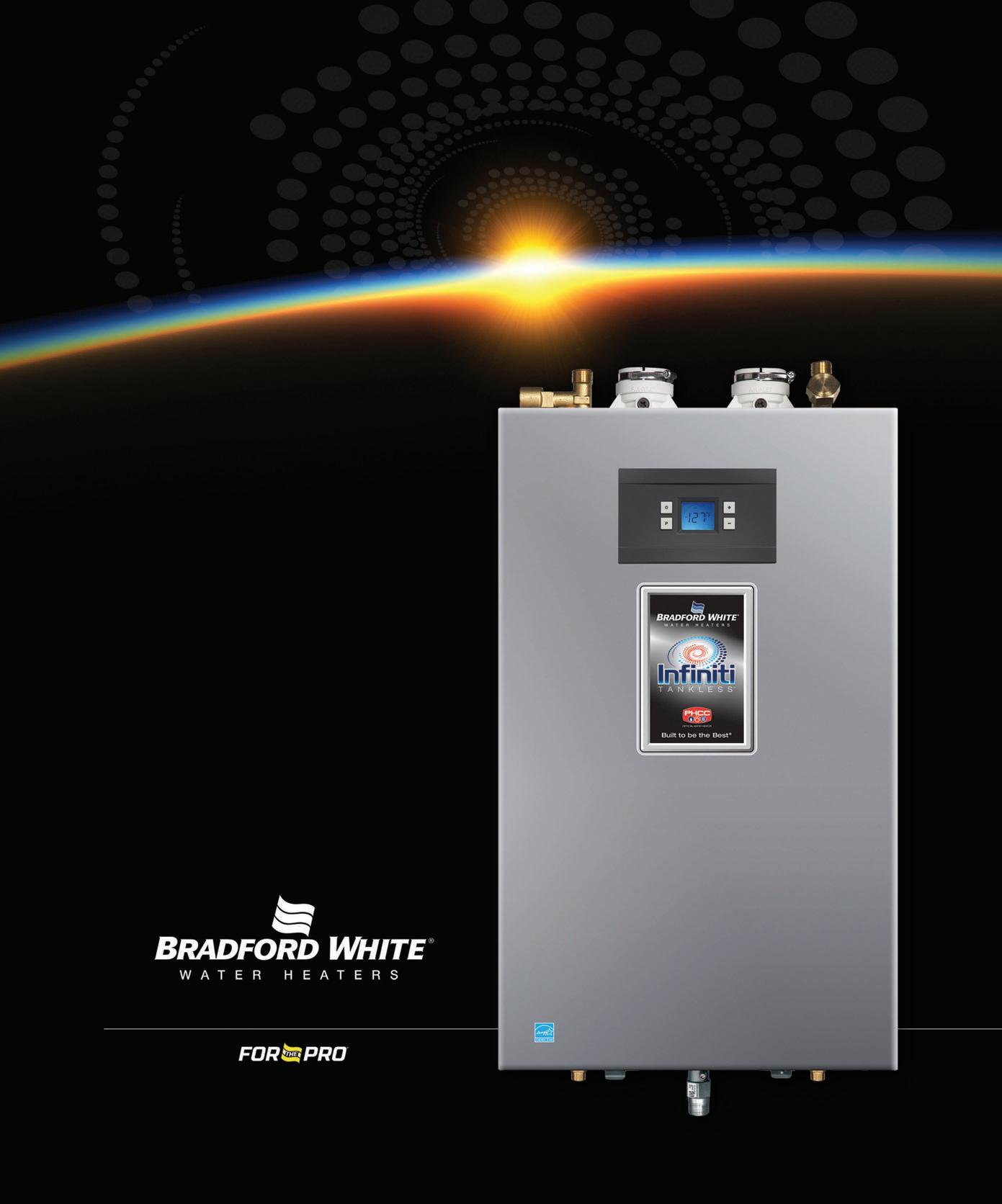
Can’t Wait? Visit bradfordwhite.com/infinitiseries
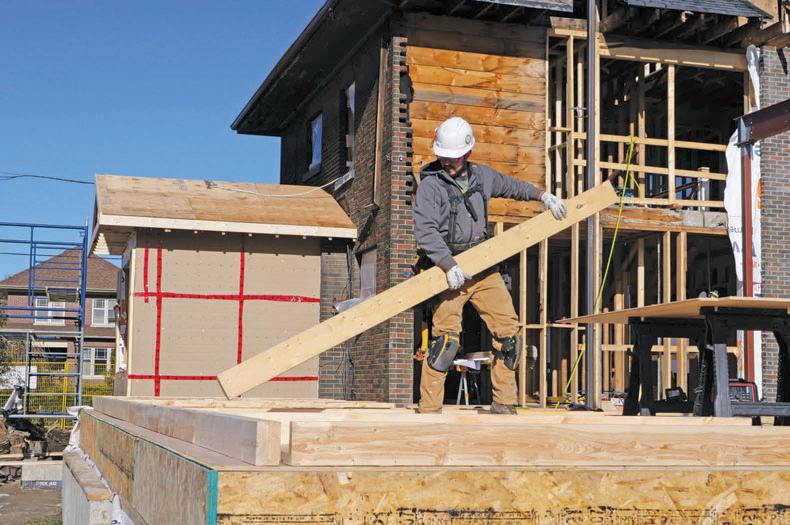
The Net Zero Labelling Program for Renovations was developed from CHBA’s initial program, which focused on new builds. New net zero renovation program launched
By Leah Den Hartogh
The global pandemic has changed the way many people use their home, workspace, and personal space. In fact, more than half of surveyed Canadian homeowners, as part of a Statista survey published in May 2021, stated that they had plans to improve their outdoor space in 2021. Thirty-two per cent had plans to renovate their bathroom and 23 per cent wanted to renovate the kitchen.
With this recent surge of home renovations over the pandemic, the Canadian Home Builders’ Association (CHBA) launched the Net Zero Home Labelling Program for Renovations.
The program provides the industry with a two-tiered technical requirement that recognizes net zero and net zero ready homes. A net zero ready home is a home that has been designated to accommodate the renewables required to make the home net zero but hasn’t necessarily installed the final steps. For example, if a home was ready to install solar photovoltaics (solar panels) to offset some of the required energy for the home but they haven’t been installed yet due to a higher price tag—this home would be considered net zero ready, explains Kevin Lee, CEO of CHBA. A pilot of the program ran from April 2020 to March 2021.
Early on in the pilot program, CHBA discovered that some type of assessment needed to be created to determine whether or not it made sense for a home to pursue the goal of net zero. “Some houses might not be feasible to really go to this extreme level of energy efficiency,” explains Lee.
This wasn’t the only lesson learned during the pilot period. One example is with sub slab insulation, “Under your basement floor in a net zero home you’ll have insulation. Obviously with a renovation, it doesn’t make sense to get in with a jackhammer and blow up the basement floor insulation so let’s find other ways to insulate,” explains Lee. Another example can be found in the ceilings—” We require sealed ductwork in net zero home and in some cases the ductwork will just not be accessible without a major tear down of ceilings.”
Additionally, a lot of homes have conventional fireplaces which is quite a big no-no for a net zero home. This is largely due to the dangers of back drafting and air leakage as they are typically very leaky. Since a lot of older homes use a fireplace as a centrepiece, this requirement was removed.
Due to the nature of the fact that dealing with an existing structure creates a more difficult task when performing renovations while also creating a net zero home, training courses were a must for this program. Qualified net zero renovators can complete training courses. Once the courses are completed, the renovator or builder must complete their first home to illustrate their capability for working on a net zero home. “We knew we would have to have training but there’s no question that the industry education is a critical component to success in all of this,” explains Lee.
This program will benefit the homeowner the most, however for those in the trades that are very keen on energy efficiency and looking to lead the charge, this program gives them recognition for their hard work and efforts as an industry leader, says Lee. “It’s kind of a win-win for the homeowner as well as for the builders or renovators participating in the program.”
At time of publication, more than 700 homes across the country have received a CHBA label with 73 qualified builders and over 40 energy advisors having completed the training. CHBA has a net zero council that meets on a regular basis during the year to help guide and inform its programs. This includes ways on how to best drive down prices over time for a net zero home, as they tend to be more expensive than buying a conventional home. “We need to do a lot of innovation, research, and developments as an industry in combination with government to find affordable solutions. Because we do have an affordability crisis in this country in terms of housing right now,” states Lee. “In the meantime, the industry needs to continue to increase the energy performance of homes and help find the best solution.”










